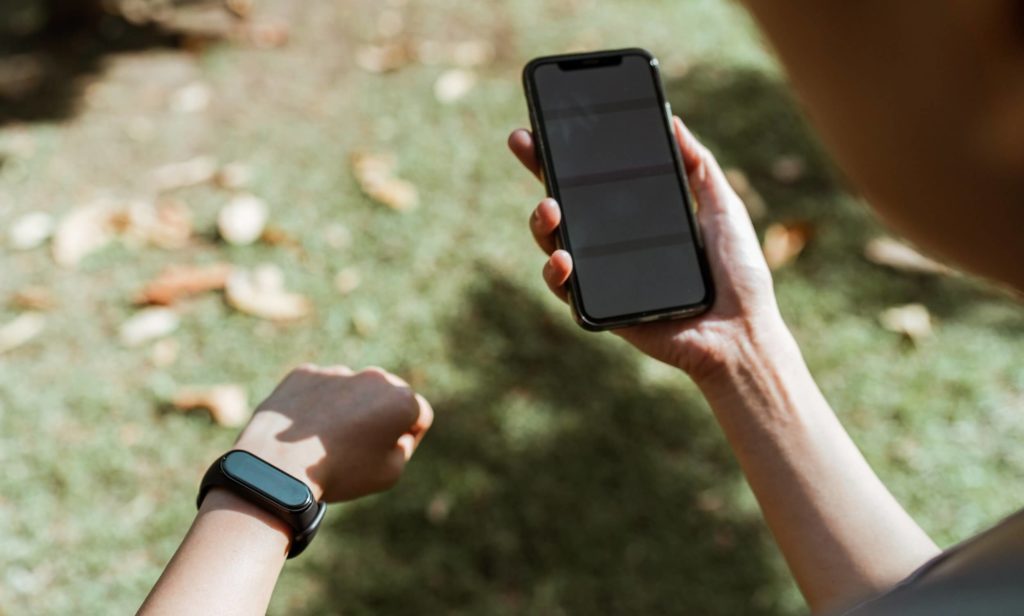What if you were told that you can train your body to change its involuntary functions? What would you teach your body? What would you want to unlearn? Biofeedback, an alternative medicine approach, claims to improve your mental and physical health by aiming to control your body functions like heart rate, blood flow, skin temperature, brain waves and blood pressure to address a health condition or to enhance physical performance. For instance, practitioners assert that it can train you to relax the muscles in your neck, shoulders or face to lower tension.

Highlights
- Biofeedback is a mind-body therapy that uses sensors attached to your body to measure key body functions,
- Biofeedback training is usually done in physical therapy clinics, medical centres or hospitals. However, biofeedback devices and programmes are becoming more common for home use as well,
- Biofeedback is primarily aimed at combating stress and has been found to be the most effective form of treatment for conditions such as learning disorders, eating disorders and muscle spasms.
What is biofeedback?
Biofeedback is a type of mind-body therapy that makes use of sensors attached to your body to measure key body functions. These sensors give you active feedback about subtle changes in your body, and the goal of the process is to use the information to learn more about how your body works and train you to develop more conscious control over certain bodily functions. For instance, it intends to help you identify and unwind tight muscles and reduce chronic pain.
It is reportedly based on the theory of ‘mind over matter’ and suggests that by being mindful of how your body responds to stressors or similar stimuli, it is possible to develop techniques to change your responses.

Types of biofeedback
There are various kinds of biofeedback treatments. The number of sessions depends on the severity of your symptoms, the way in which your body responds to the training, your treatment goals and the frequency of the practice. Each of them use slightly different technologies to achieve their desired outcomes. The most common types of biofeedback are:
- Electromyography (EMG) biofeedback: Measures muscle tension and can help with neck pain or headaches,
- Thermal or temperature biofeedback: Measures changes in body temperature. It aims to teach you how to increase blood flow to certain parts,
- Neurofeedback or Electroencephalography: Measures brain wave activity to enhance specific brain-wave frequencies to train you to focus, calm down, and stimulate flexibility of thinking.
Other types of biofeedback also exist, though they are used less frequently, such as:
- Galvanic skin response training, which measures the amount of sweat on your skin.
- Heart rate variability biofeedback, which measures your HRV to understand the functioning of your autonomic nervous system. It can train you to activate the parasympathetic nervous system to prompt the rest and digest mode.
- Pneumographic biofeedback, which measures abdominal vs. chest breathing to modulate your relaxation response.
Biofeedback training is usually done in physical therapy clinics, medical centres or hospitals. Sensors are connected to your body and measure various markers that are then used to perform a particular kind of training. However, biofeedback devices and programmes for home use are also becoming more commonplace. These devices usually take two forms:
- Interactive computer programmes: Some types of biofeedback devices measure physiological changes by using one or more sensors attached to your fingers or your ear. The other end of the sensors plug into your computer or mobile device. Using graphics and prompts on screen, the devices then help you combat stress by instructing you to pace your breathing, destress and think in affirmative or positive ways about your abilities and yourself. Studies suggest that these types of devices might be effective in improving responses during stress in order to induce feelings of calm and well-being.
- Wearable devices: Another type of biofeedback therapy involves wearing a headband that monitors brain activity during meditations or breathing exercises. The data collected after each session is sent to your computer or mobile device so that you can track your progress over time and see the improvements in your stress response or levels of tranquility. Another type of biofeedback requires wearing a sensor on your waist that monitors your breathing and tracks your breathing patterns using an app. The app can alert you when you’ve had a prolonged period of tension and offer guided breathing activities to help restore your calm.
How does it work?
While you are connected to the sensors, a biofeedback therapist will teach you how to lower your heart rate through breathing exercises, relaxation techniques and various other mental exercises. You can actively measure and view the results of these techniques on the monitor. These changes prompt a visual signal or a sound, and a variation in pattern on the screen that indicates that the physiological change has taken place. The practitioner may ask you to change how you sit, stand or move, concentrate on releasing or relaxing particular muscles for pain relief and take a test or do a mental activity to observe their impact on your physiological measurements.
The screen shows the results of your training in real time to try and encourage you to incorporate these changes in your life so that they become a habit. For it to work, you must attend multiple sessions, participate actively and practice between these sessions to train yourself better.
A biofeedback session usually lasts between 30 and 60 minutes. The number of sessions needed to resolve a particular health issue can vary based on various factors, including how quickly you are able to learn to control your physical responses.
Applications
Biofeedback is primarily aimed at combating stress. It has been found to be most effective as a form of treatment for conditions such as learning disorders, eating disorders, muscle spasms and bed-wetting.
In addition, research suggests that biofeedback can be effective in training the body to respond better in case of conditions like:
- Anxiety, depression and post-traumatic stress disorder (PTSD)
- Asthma
- Incontinence or constipation
- Irritable bowel syndrome (IBS)
- Chemotherapy side effects
- Fibromyalgia
- High blood pressure
- Chronic pain
- Raynaud’s disease
- Tinnitus
- Attention deficit hyperactivity disorder (ADHD)
- Substance use disorders
Research shows that biofeedback induced relaxation is correlated with a significant reduction in average blood glucose, A1C, and muscle tension compared with the control group. It has also been found that biofeedback can enhance markers of blood lipids, blood pressure, and blood glucose in patients with metabolic syndrome, and is more effective for individuals with high job stress levels.
Benefits and risks
One of the major benefits of biofeedback as a form of treatment is that it is non-invasive and doesn’t require medications. Often, people pair biofeedback with more traditional treatment options to improve overall wellness. While researchers are not sure how or why biofeedback works, it has shown promise in the treatment of a variety of conditions. Biofeedback can help in enhancing one’s coping skills in conjunction with other behavioural therapies.
Research suggests that biofeedback can help you feel in control of your health and show positive results for overall wellness; additionally, there are no reported side effects. However, it is important to remember that biofeedback complements medical care. It does not replace it, and its effectiveness as a standalone therapy is not established. It should be used as an adjunct to medical treatment for better results. For instance, someone with chronic pain may take medication and also learn biofeedback. It’s important not to delay seeing a medical professional for a health issue, even if biofeedback helps in the management of your condition. Continue prescribed medications, no matter how positive the results of biofeedback may be. Biofeedback devices are not advised for people with certain medical conditions, such as heart rhythm problems.
Conclusion
Wearables have advanced. As an alternative therapy that can help with particular conditions that are linked to the management of stress, biofeedback has shown very promising results. It is a new treatment that is often considered a way to ‘train the mind’, and can be used in conjunction with medical care to manage various issues. It claims to improve health by controlling involuntary functions like blood, flow, skin temperature, heart rate and more. Research also suggests that biofeedback can be effective intervention to regulate blood glucose and other markers of metabolic syndrome. The real time feedback and the potential benefits mean that it is an evidence-based option to resort to if you want to gain greater control over your physical responses and behaviours. Consult your physician or therapist before you begin biofeedback treatment.
Disclaimer: The contents of this article are for general information and educational purposes only. It neither provides any medical advice nor intends to substitute professional medical opinion on the treatment, diagnosis, prevention or alleviation of any disease, disorder or disability. Always consult with your doctor or qualified healthcare professional about your health condition and/or concerns and before undertaking a new healthcare regimen including making any dietary or lifestyle changes.
References
- https://my.clevelandclinic.org/health/treatments/13354-biofeedback
- https://www.healthline.com/health/biofeedback
- https://www.verywellmind.com/what-is-biofeedback-2794875
- https://www.mayoclinic.org/tests-procedures/biofeedback/about/pac-20384664
- https://www.brainline.org/article/what-biofeedback-and-neurofeedback








